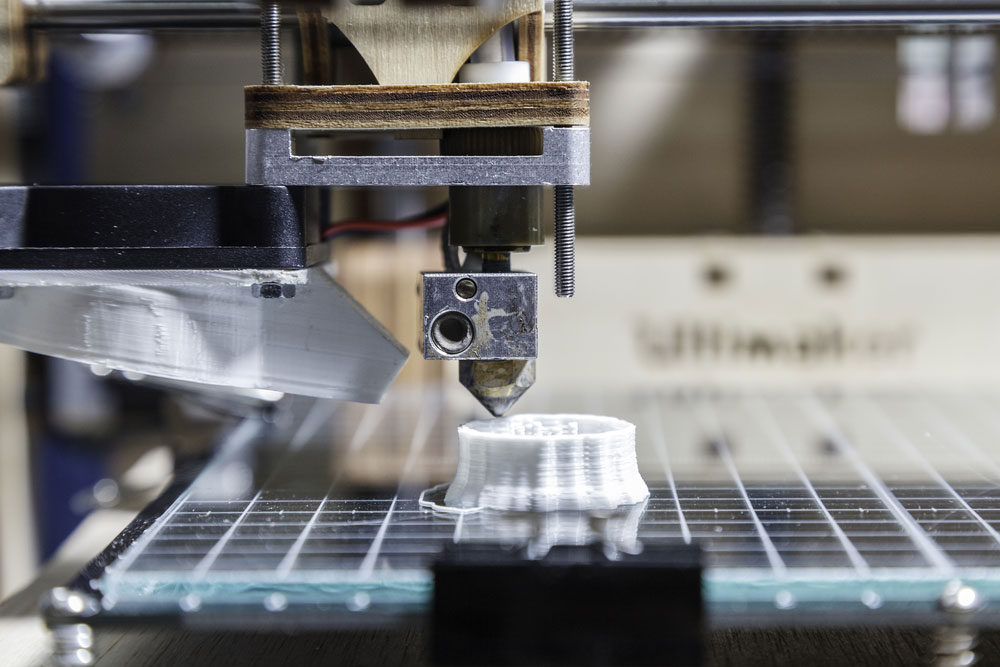Rapid prototyping steps depend on multiple factors, including the desired outcome. RP experts can help you determine the appropriate approach based on your goals and budget. Here is what you can expect during the process and how to make the most of your investment.
Rapid prototyping steps help product developers keep track of every feature and design change. Rapid prototyping services also aim to ensure optimal outcomes despite the design complexity. However, you can miss crucial details without understanding the process.
“Fast manufacturing isn’t cheap, but neither are costly mistakes.”
Rapid prototypes can range in precision to include rough representations or market-ready models. The results depend on your goals, design, materials, and budget. Still, you can help control the process by learning what to expect.
There are no one-size-fits-all rapid prototyping steps. You must tailor each project to specific objectives and work with experts to meet industry expectations. Here is what you should know in the meantime.
Table of Contents
What Are the Most Common Rapid Prototyping Steps?
How to Expedite Rapid Prototyping Steps
5 Factors That Can Affect Rapid Prototyping Costs and Lead Times
What to Expect During the Rapid Prototyping Process
Questions to Ask Your Rapid Prototyping Team
What Is Rapid Prototyping?
Rapid prototyping steps can vary widely depending on multiple factors. However, the process is relatively simple and can help product developers save money. The most common rapid prototyping steps involve a group of precision techniques to fabricate scale models of a part or assembly. Many manufacturing facilities use additive manufacturing (3D printing) or CNC machining to complete their orders.
Before mass production, operators utilize highly advanced software to demonstrate design strengths and weaknesses. Their computer-aided design (CAD) tools help align perspectives and produce relevant data for examination. Then teams can build their components based on the final design, given each department signs off on the changes.
The most efficient rapid prototyping steps can help crews meet or exceed industry standards while inviting more innovation. They encourage ingenuity without threatening design integrity. Some product developers worry about the cost of RP but fail to consider the alternative. Manufacture faulty parts and pay more than just money. Poor designs can cost your company its reputation.
DID YOU KNOW: Highly regulated companies like NASA and Amazon use rapid prototyping steps to maintain evolving ISO standards.

We offer fast, high-quality, tailored PROTOTYPING solutions for leading companies in a wide range of industries.
superior Rapid PROTOTYPING
What Are the Most Common Rapid Prototyping Steps?
The rapid prototyping steps you follow might differ from a previous order or your competitor’s technique. That’s because each project requires a unique approach. You could also need various model qualities for examination and demonstration. Your crew should help determine which direction to go.
“Prepare for unexpected events, fluctuating costs, and extended lead times.”
Even the most experienced fabricator can’t predict every event or outcome. However, they’ll use these common rapid prototyping steps to ensure consistency and quality wherever possible:
Step #1. CAD Modeling
The rapid prototyping steps typically begin with a solid model in CAD. The valid model represents the design of each part. Designers can use pre-existing files to customize a component or create single-use examples. Many existing CAD files only require minor modifications to support a complex RP order.
Step #2. CAD Conversion
CAD programs utilize various algorithms, so designers must work diligently to ensure quality, accuracy, and consistency. Generally, they use an STL format as the rapid prototyping standard. Operators need to convert the CAD file into STL for cohesion and to define the three-dimensional boundaries.
Unlike CAD, an STL file uses triangular facets to create curves and angles. Complicated designs might require more triangles, thus producing more significant file sizes. Massive files could cost more time and money to process, so speak to your team for more details.
Step #3. STL Model Slicing
Experts will bring your finished STL model to the slicing program for further processing. This is one of the essential rapid prototyping steps because it allows teams to make last-minute adjustments to the design. They can change the size, swap the orientation, or switch locations of various aspects before manufacturing.
STL model slicing slices the prototype into several thin layers for analysis and enhancement. The number of layers can depend on the build method, materials, and blueprint complexities. Some programs might also produce an auxiliary structure to hoist the model during fabrication.
Step #4. Model Fabrication
The rapid prototyping steps continue when the tool patterns for building and supporting the structure are created. Operators fabricate a prototype using one of the multiple build techniques established. Meanwhile, most RP machines are fully automated and produce parts one layer at a time using the STL model.
Step #5. Post-Processing
Post-processing is the final rapid prototyping step. It involves taking the prototype off the machine and detaching any support structures produced during fabrication. Depending on the materials and desired appearance or strength, some designs might require photocuring, cleaning, surface treatments, or finishing.
DID YOU KNOW: Skipping the post-processing rapid prototyping steps can significantly reduce your design durability.
How to Expedite Rapid Prototyping Steps
Rapid prototyping steps should already be fast and efficient. Regardless of the possible setbacks, RP promotes productivity across all fabrication phases. It can also help teams work more collaboratively while streamlining manufacturing, cutting costs, and meeting crucial deadlines.
“Expect discussions about your goals, budget, and competition.”
Create an agile environment and an adaptable concept. You can expedite rapid prototyping steps and enhance your deliverables with these six strategies:
- Begin with a Paper Prototype
- Choose Tools Carefully
- Mind the Materials
- Generate Specifications
- Simplify the Design
- Collaborate with the Crew
Start your rapid prototyping steps with rudimentary 2D examples of your concept. You can build out as the development teams grasp the various aspects and uncover the limitations. Don’t try to begin the RP process in front of a computer screen because you could miss critical details or inadvertently restrict your design.
Next, select your tools wisely based on the most crucial elements of your project. Then use the same tools throughout each step to create prototypes with excellent fidelity and usability. This strategy helps streamline RP processing while standardizing each outcome around a particular platform.
The materials you use can also affect lead times, so choose prototypes that generate specifications. You shouldn’t just hand over your design and ask an expert to code it. Real-world processing requires various amounts of data to supplement components and clearly define fabrication goals. You can add complexity or simplify as you collaborate with different production departments.
5 Factors That Can Affect Rapid Prototyping Costs and Lead Times
Rapid prototyping steps can impact the overall cost and required time. Meanwhile, there is no average number to chase. Several factors affect prototyping prices, including the order size and schedule. Some projects can cost a few hundred pounds, and others can cost thousands. Also, the more expensive orders aren’t necessarily the quickest, and the fast projects aren’t always the cheapest.
These are the five primary factors that can affect rapid prototyping steps, costs, and lead times:
- Materials – Certain materials could require special processing or finishing. Many industries also require specific textiles to meet ISO standards.
- Design – Intricate blueprints can prolong processing or add more rapid prototyping steps before finishing. Straightforward plans require less time and money.
- Technique – There are multiple rapid prototyping techniques, and each will render a different outcome. Talk to your team about the most efficient option.
- Talent – Rapid prototyping steps require expert attention and skill. Much of the process is automated, but you need a trained eye for the details and adjustments.
- Timeline – You might have to pay more if you need expedited rapid prototyping services. Rushed orders could also skip particular steps, reducing the outcome quality.
Highly skilled RP teams can cost more and might have a waiting list. Product development is a multi-stage process requiring constant due diligence and years of training. The experts want fair pay for their excellent services, and their calendars can fill up quickly. Rushing the milestones or requesting special treatment could beckon a more significant price tag.
Reputable fabrication shops cannot cut corners to accommodate multiple projects.
“Start completing the rapid prototyping steps as soon as possible to avoid costly delays.”
Or ask your team how you could help prepare for the project to expedite and enhance economically.
DID YOU KNOW: You can customize the rapid prototyping steps to achieve specific goals and charge ahead of your competitors.

We offer fast, high-quality, tailored PROTOTYPING solutions for leading companies in a wide range of industries.
superior Rapid PROTOTYPING
What to Expect During the Rapid Prototyping Process
Knowing what to expect during the various rapid prototyping steps is essential. The knowledge can reduce frustration and confusion among collaborating crews by providing relevant information in real-time. The fast prototyping process is partially automated but wholly complex, with multiple opportunities for error.
Prevent oversights and eliminate disputes about different elements or decisions with a concise plan. Determine your goals, calculate the budget, look at the schedule, and discuss the options with your partners. There is no right or wrong way to complete rapid prototyping steps unless you skip critical junctures. A talented team should help you avoid that.
“Expect several discussions about the overall design and talks about different adjustments.”
When you change something, get ready for a crew member to bring it to your attention. This is your chance to confirm or deny the modifications before mass manufacturing. Do not expect the first prototype to be the final product because it’s only a starting point.
You can ask as many questions as needed and dictate various aspects of the process to align with your goals. Expert RP designers can help you decipher and implement ISO standards into your design, ensuring maximum usability. They might also assist with inspections and certification for high-profile projects involving delicate components.
TIP: Make a list of the questions, comments, and concerns before launching the first rapid prototyping steps. Then use the answers to direct your path and maintain consistent quality.
Questions to Ask Your Rapid Prototyping Team
Prepare for the rapid prototyping steps with a careful approach and inquisitive mind. Your team is probably not afraid to answer critical questions about the project. They want to understand your objectives as much as you want to understand their processes. These discussions can help both sides determine crucial factors, limitations, and expectations.
Creating a partnership is important, but so is developing a comprehensive plan. Here are some of the questions you should ask before starting:
- How will my chosen materials affect the lead times and costs?
- Are there any alternative materials I could use?
- Which rapid prototyping steps can I skip, if any?
- Can you help fabricate intricate geometries?
- What are the minimum and maximum allowable tolerances?
- Which elements of my design could impact your precision?
- Are there any supply chain disruptions I should know about?
- What shop factors could change the price or lead times?
- Can I speak directly to the rapid prototyping team?
- Do I need to provide anything else besides my CAD/STL model?
Rapid prototyping steps should be customized to your goals and allowances. However, they should also align with industry expectations and perform better than the competition. Write down your questions and bring them to each team meeting for improved communication and meaningful collaboration.
Conclusion
The rapid prototyping steps you choose could make or break the outcomes. Ensure optimal results with a streamlined plan and team of talented experts. Then learn what to expect and find out how you can adjust the design for better efficiency.
RP experts can help you determine the most comprehensive approach based on your goals and budget. They’ll explain each phase and allow you to modify elements before production. Make the most of your investment with rapid prototyping steps that make sense. Then avoid missing critical details while developing practical models for examination, inspection, implementation, and distribution.
 About the Author
About the Author
James Murphy is the founder and CEO of HLH Rapid – a hybrid CNC machine shop fusing Western service and quality with Eurasian industry influences for over 14 years. His advanced enterprise uncovers cost-effective rapid injection molding techniques to remain unmatched by industry competitors. Murphy’s full-service fabrication and manufacturing methods span six dedicated zones, from 3D printing and vacuum casting to sheet metal prototyping and project management. His expertise also includes high-efficiency machining within strict yet volatile markets.
Murphy earned an MBA after becoming inspired by his father’s hands-on craftsmanship. As a budding entrepreneur, he taught English and studied Chinese to pursue pioneering objectives. His groundbreaking approach helps build the future by providing well-rounded manufacturing services to innovative Western businesses. When he’s not offering upscale RP and CNC, James enjoys art-house movies, Thai boxing, and spending time with his growing family.


